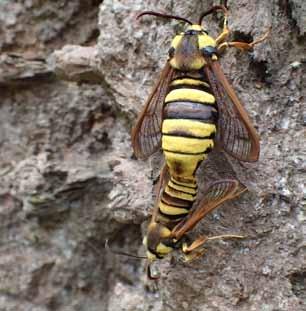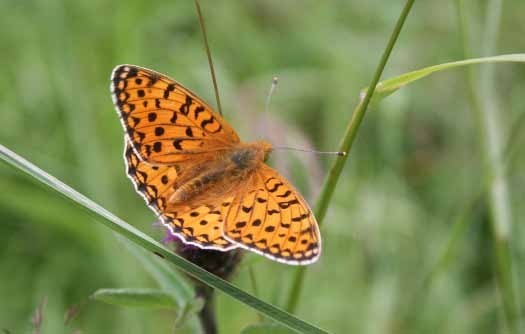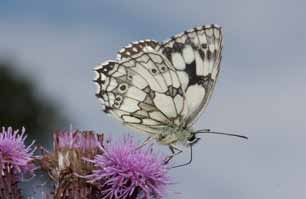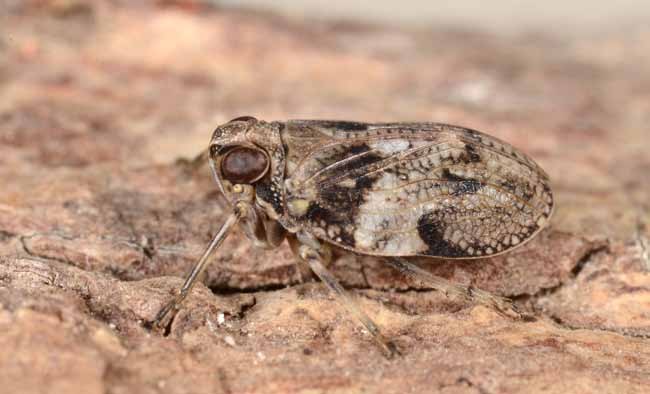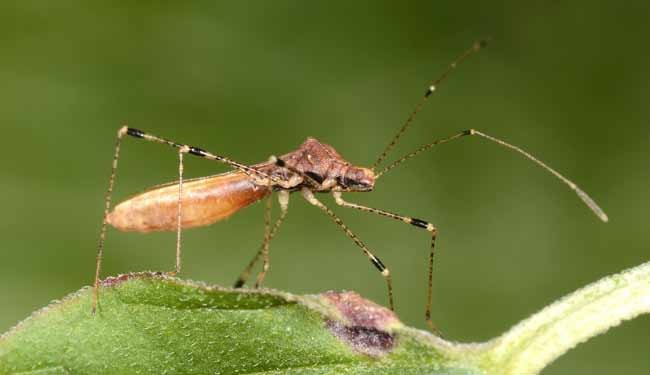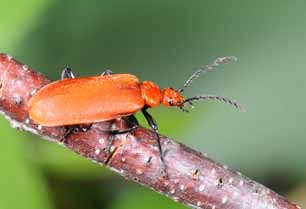Wyre Forest Study Group – Insect articles
(Note – PDF articles may not display correctly in FireFox web browser)
Illustrated personal highlights – Oliver Wadsworth
Oliver Wadsworth records some of his entomological highlights in Wyre during 2022. Weevils, Beetles, Bees and Moths are just some of the records reported.
Wildlife records 2022 – John & Denise Bingham
John and Denise Bingham detail four species they recorded during the year: Eurydema ornata, Villa cingulate, Coccidula scutellate and Geastrum striatum
Worcestershire Entomology Day 2022 – Susan Limbrey
The annual Worcestershire Entomology Day was a great success, Susan Limbrey reports on the speakers and their presentations from the day.
The Yellow Mayfly – Peter Freeman
Peter Freeman celebrates the Yellow Mayfly, in verse.
Bewdley urban – Brett Westwood
Wildlife in urban areas can be surprisingly varied as this visit to urban Bewdley showed. Species varied from Little Egret to Mexican Fleabane, via a Southern Pill Woodlouse although the Green-fanged Tube-Web spider lurking in a cavity in an old brick wall was probably the highlight of the day.
Hunthouse Wood – Rosemary Winnall
Members visited Hunthouse Wood despite the rain and it being amongst one of the most
impenetrable and undisturbed woods in the county! Many species were recorded during the day which was perfect for testing waterproof cameras, records included 37 species of leaf-mining Lepidoptera, with 12 new to this special site.
Conservatory Insects – Rosemary Winnall
Insects are attracted to conservatories, here Rosemary Winnall describes those which were found in her Bewdley conservatory.
Phylloxera glabra – Rosemary Winnall & Carol Taylor
The Plant Pathogen Group found a colony of Phylloxera glabra on an Oak leaf at Ribbesford. This tiny relative of Aphids was later found by Rosemary Winnall on the track from Blackstone to the Devils Spittleful.
Gonatopus clavipes – John Bingham
John Bingham describes finding Gonatopus clavipes, a tiny wasp which resembles an ant, and the first record for Shropshire.
Entomology Day 2021 – Susan Limbrey
Entomology Day 2021 was a success, Susan Limbrey reports on the day. This includes Gavin Broad’s ‘Wonderful world of wasps’; Brett Westwood in conversation with Richard Lewington about Richard’s illustrations; Mel Mason asked ‘What have Lepidoptera ever done for us’ and provides some answers; Jean Young’s talk about ‘Little things, dead things and the odd pile of poo’ and some of Bob Kemp’s ‘Magic moments.
Exochus gravipes – John Bingham
A large brightly coloured Ichneumonid was seen in Wyre. John Bingham’s article describes the background to the group and the challenges of identification.
Xiphydria camelus (Linnaeus, 1758) Hymenoptera,Xiphydriidae. Alder Wood-Wasp – John Bingham
“The Alder Wood-Wasp, and its associated parasitic fauna, is one of the more remarkable entomological treasures of the Forest of Wyre. So wrote Norman Hickin in his book ‘The Natural History of an English Forest’ (Hickin 1971). In this article John Bingham reviews the sparse records of this insect in Wyre Forest and wonders if it is under recorded as there seems to be suitable habitat present.
Special 2019 Recordings from Fastings Coppice – Jonathan Cartwright
A collection of photographs taken by Jonathan Cartwright, evidencing some of the more unusual and special sightings that he was able to record at Fastings Coppice in 2019.
(From Wyre Forest Study Group REVIEW 2019)
Yellow Flat-footed Fly Agathomyia wankowiczii, Platypezidae,Diptera, on Artist’s Fungus Ganoderma applanatum (Pers.)Pat. Polyporales – John Bingham
Here John Bingham describes how in 2010 he had discovered the uncommon bracket fungus Ganoderma applanatum on several uprooted oaks. Returning again in 2012 to photograph the fungus, he also recorded the presence of galls on the fungus, made by the Yellow Flat-footed Fly, Agathomyia wankowiczii, a very scarce species. Visiting the area once again in 2019, John brings us up to date with his observations.
(From Wyre Forest Study Group REVIEW 2019)
A Stylops Afternoon – Brett Westwood
“It used to be classified as an abnormal beetle, it’s the symbol of the Royal Entomological Society and the writer and coleopterist Richard “Bugman” Jones has never seen a live specimen”. These are the intriguing words of Brett Westwood as he describes spending a pleasant spring afternoon of discovery with Rosemary Winnall in her garden at Bliss Gate. Stylops is definitely the order of the day!
(From Wyre Forest Study Group REVIEW 2019)
Sphaerophoria taeniata (Meigen, 1822) A new species of hoverfly for Wyre Forest – Gary Farmer
Gary recalls taking part in a field meeting of the Wyre Forest Study Group on an unseasonally wet, damp and dark summers day in July 2019. The weather was so poor even for the UK, that confidence was low for finding anything of interest, confirmed by murmurs of “not a lot about” by group members. And then something bright and yellow caught his eye, as he explains …
(From Wyre Forest Study Group REVIEW 2019)
Philoscia affinis Verhoeff, 1908 a new woodlouse (Isopoida: Philosciidae) found in Wyre Forest – Gary Farmer
Gary explains here how, having taken a photograph of a humble woodlouse back in 2015 and labelling it as Philoscia muscorum, the common Striped Woodlouse, he decided to take another closer examination and investigate further. In doing so he was able to identify new features which resulted in a new woodlouse record for the Wyre.
(From Wyre Forest Study Group REVIEW 2019)
Longhorn Beetles (Cerambycidae, Coleoptera) of Wyre Forest – an update – John Bingham
In 2010, John conducted a survey of Longhorn Beetles in the Wyre Forest when he recorded 22 species. Since then more species have been added to the list by John and others to bring to current list to 29, with some notable rare and nationally scarce species. John brings his list up to date in his article and includes the criteria for adding Longhorn Beetles to the species list.
(From Wyre Forest Study Group REVIEW 2019)
Entomology Day 2019 – Insects and their Lifestyles – Susan Limbrey
Susan’s compiled report on this year’s Entomology Day explains how the day gave us the genesis and content of an important new book, an exploration of insect-rich sites few of us had visited, research of significance in relation to climate change, beetles surviving from ancient woodland, news of migrating dragonflies and damselflies, and a demonstration of the value of filming insects to record their behaviour.
(From Wyre Forest Study Group REVIEW 2019)
Drosophila suzukii; a new pest of cherries – Brian Stephens
In this article Brian Stephens maps out the progress of Drosophila susukii into Europe and North America from its native source in southeast Asia. Brain explains how this species behaves in different ways to many of species of fruit flies and how it has established itself as pest in parts of the UK, having first been recorded in 2012.
(From Wyre Forest Study Group REVIEW 2019)
A Beetling Visit to Wyre Forest – Clive Washington
Hailing from Cheshire, Clive Washington describes his 3 day visit to Wyre Forest to look for beetles, with a special interest in cryptic beetles. Together with Rosemary Winnall and John and Denise Bingham Clive was able to record an impressive 134 species, 61 of which were new records for Wyre Forest.
(From Wyre Forest Study Group REVIEW 2019)
Aquatic Day – Mike Averill
Enjoying what, with hindsight, was one of the last days of sunshine of 2019, Mike Averill describes a day out dipping in one of the few permanent ponds in the forest near Uncillys. Although no fish were caught by the end of the day the group had recorded a mixed bag of some 36 species of insects, crustaceans and molluscs, plus a final sighting of a Spotted Flycatcher.
(From Wyre Forest Study Group REVIEW 2019)
Entomology Day 2018 – Flights of Fancy – Chair: Brett Westwood, Report: Susan Limbrey
Continuing the very successful annual event, the theme of the 2018 Entomology Day was Flights of Fancy with six guest speakers. The day was chaired by Brett Westwood who introduced each guest speaker in turn throughout the highly enjoyable and enlightening day. As recorded by Susan Limbrey, one of the many fasinating highlights of the day was the unique conversational interview with Dr Erica McAlister, curator of diptera at the National History Museum, London, by Brett Westwood.
(From Wyre Forest Study Group REVIEW 2018)
Hornet Moths in Bewdley – Rosemary Winnall
The Wyre Forest Study Group Wednesday Group visited Riverside North Park in Bewdley on 5th July 2017 to record wildlife. As well as dipping the lake and checking the banks of the River Severn, we examined the tall poplars at the south east side of the Park. At the base of one of these trees we found holes and a pupal case of the Hornet Clearwing Moth Sesia apiformis although pheremones failed to attract an adult male. However, when John Cox visited the area again in 2018 he had a surprising success using pheremones, as Rosemary records.
(From Wyre Forest Study Group REVIEW 2018)
A Most Recent Record of Pyrrhidium sanguineum – Roger Plant
It all started on a cold winters night when Roger and his wife were sitting in front of their hearth. Emerging from out of the woodpile, an unexpected visitor flew into their sitting room. Here, Roger explains how he took care of the Welsh Oak Longhorn beetle and his efforts to understand how this unexpected guest came to be in their home.
(From Wyre Forest Study Group REVIEW 2018)
Records of Note from Helen Mackaness Reserve, Wyre Forest, 2018 – Kevin McGee
The Helen Mackness Reserve is a newly acquired Worcestershire Wildlife Trust (WWT) Nature Reserve. As part of the species survey work needed, Kevin was able to visit the reserve on four occasions. This article provides details of some of Kevin’s records made during these visits.
(From Wyre Forest Study Group REVIEW 2018)
Notes on two Myrmecophilous Beetle Species in the Collections – Mike Bloxham
The Wyre Forest Study Group Review (2013) contains extensive reprints of a report by the notable midlands naturalist William Gabrial Blatch which summarise some collecting experiences in Wyre Forest in considerable detail. It also contains Mick Blythe’s useful analysis of species found by Blatch enabling us to see which ones have been re-discovered in more recent times and appear on the Wyre Forest Database and those which have not.
(From Wyre Forest Study Group REVIEW 2018)
Recording Riverflies in Wyre – Ian Wallace
The Riverfly Recording group brings together experts in identifying and recording riverflies – caddis, mayflies and stoneflies. Here Ian Wallace recalls the meeting of the group in May 2018 and lists the 45 species of caddis, 15 species of mayflies and 5 species of mayflies recorded over two days.
(From Wyre Forest Study Group REVIEW 2018)
The Bilberry Bumblebee, Bombus monticola , in the Wyre – Carol Taylor with comment from Brett Westwood
During the Wyre Forest Study Group meeting on Wednesday 7th June 2017, members visited Button Oak Meadow, a Worcestershire Wildlife Trust/Shropshire Wildlife Trust reserve. The brief was to look for insects in the flower-rich meadow. While looking over the meadow for anything of interest, Carol Taylor saw an odd-looking bumblebee
(From Wyre Forest Study Group REVIEW 2017)
Records of Note from Wyre Forest, 2017 – Kevin McGee
Kevin McGee provides an insight
(From Wyre Forest Study Group REVIEW 2017)
Lesser Marsh Grasshopper Chorthippus albomarginatus and brown variety of Meadow Grasshopper Chorthippus parallelus in Wyre Forest – Gary Farmer
In Britain, the Lesser Marsh Grasshopper was once a species of wet grassland and marshes, especially in coastal areas in association with estuaries (Ragge 1965). However, as Gary Farmer explains, this species may now be found in all but the driest grasslands. It was noted as being established on dry grassy hillsides in the West Midlands in
(From Wyre Forest Study Group REVIEW 2017)
Entomology Day 2017 – Insect Imagery – Susan Limbrey
Continuing the very successful annual event, the theme of the 2017 Entomology Day was Insect Imagery with seven guest speakers. The day was chaired by Brett Westwood who introduced each guest speaker in turn throughout the highly enjoyable and enlightening day. As recorded by Susan Limbrey, one of the many highlights of the day was the unique conversational interview of renowned Insect Wildlife illustrator, Richard Lewington by Brett Westwood.
(From Wyre Forest Study Group REVIEW 2017)
Clearwing Moths of Greater Wyre – Tony Simpson
The Clearwing Moths, Family Sesiidae, are a classical example of mimicry. They are day-flying insects who have come to resemble, sometimes to a remarkable degree, various
(From Wyre Forest Study Group REVIEW 2017)
An addition to the Wyre Coleoptera list – Mike Bloxham
“Whilst reviewing weevils in my collection, I came across this fascinating specimen from a foray in the last century!” – Mike Bloxham reflects on the value of field notes made some twenty years ago to discover a unrecorded weevil.
(From Wyre Forest Study Group REVIEW 2017)
Agriotypus armatus in the Wyre Forest – Brett Westwood
The author describes how he first became aware of the parasitic life history of Agriotypus armatus and its relationship with the caddis Silo pallipes. He shares his observations of this parasite in Wyre, providing a fascinating insight into its behaviour.
(From Wyre Forest Study Group REVIEW 2017)
Some Micromoths from Wyre, 2016 – Oliver Wadsworth
The author shares some of his beautiful photographs of micromoths found in Wyre during 2016.
(From Wyre Forest Study Group REVIEW 2016)
This article notes species of interest recorded during a summer wildlife walk through Bewdley and Ribbesford by the Wyre Forest Study Group.
(From the Wyre Forest Study Group REVIEW 2016)
Caryocolum junctella, a rare micromoth in the UK with very few records, was first found in Wyre in 1994 and recorded again at the same site in 2016.
(From the Wyre Forest Study Group REVIEW 2016)
The author documents his interesting find of Forcipomyia sphagnophila in the Forest.
(From the Wyre Forest Study Group REVIEW 2016)
Naturalist, author and artist Mike Bloxham writes about how he became interested in natural history, and developed his passion for entomology.
(From the Wyre Forest Study Group REVIEW 2016)
Tinodes pallidulus, (McLachlan) another rare Wyre Forest caddis – Ian Wallace
The author writes about the larvae of this rare caddis in various brooks in Wyre and encourages us to find out more about its local status and distribution.
(From the Wyre Forest Study Group REVIEW 2016)
Dr Sarah Henshall from Buglife was the keynote speaker. Her talk ‘Living on the Edge’ referred to brownfield sites, soft rock cliffs and exposed riverine habitats. Dr David Heaver provided information about the Pantheon Invertebrate Database; Dr Ian Wallace spoke about finding caddis; Pete Boardman described the Shropshire Springtail Atlas Project; Robin Williams showed photos of insects in flight and Wendy Carter finished the day with a talk about how her interest in bees and wasps began. The day was chaired by Brett Westwood.
(From the Wyre Forest Study Group REVIEW 2016)
Natural England’s fogging project involved sampling three oak trees in the Wyre Forest, and this article describes the method and some of the results.
(From the Wyre Forest Study Group REVIEW 2016)
The author describes one of the Wyre Forest Study Group field meetings to the River Severn north of Bewdley in June. Special targets for the day were dragonflies and Black Poplars.
(From the Wyre Forest Study Group REVIEW 2015)
The larvae of a biting midge Forcipomyia costata where found and photographed on a rotting branch in Ribbesford Wood, this article describes their habitat and propogation to aid identification.
(From the Wyre Forest Study Group REVIEW 2015)
John and Denise Bingham describe finding teneral Snow Fleas for the first time in Wyre during 2015. A map shows the locations of Snow Flea records to date.
(From the Wyre Forest Study Group REVIEW 2015)
Paul Brock was the keynote speaker for Entomology Day 2015 and he spoke about ‘Rare Insects in Britain’. Topics covered by other speakers included Snow Fleas, Soldier Beetles, canopy fogging, insects of disturbed habitats and fauna of dungheaps.
(From the Wyre Forest Study Group REVIEW 2015)
The author describes two beetles that predate molluscs – Cychrus carboides and the glow-worm Lampyris noctiluca.
(From the Wyre Forest Study Group REVIEW 2014)
The author celebrates the often denigrated Muscids and Calliophorid flies.
(From the Wyre Forest Study Group REVIEW 2014)
The author shows photographs of the development of the larva of a Polysphincta Ichneumon wasp on an Araniella spider.
(From the Wyre Forest Study Group REVIEW 2014)
The author discovered the tortrix moth Acleris abietana in a Douglas Fir – a new record for Shropshire as well as the Wyre Forest.
(From the Wyre Forest Study Group REVIEW 2014)
Peter Marren, speaking about ‘The Secret History of Butterflies’, was the keynote speaker at this year’s Entomology Day. Other speakers spoke about horseflies and people, cess pit fauna, insects using apple trees, life in dead wood, water beetles, and an entomology update from Wyre.
(From the Wyre Forest Study Group REVIEW 2014)
The author celebrates the refinding of the rare micromoth Schiffermuelleria grandis in Ribbesford Woods early on 31st May 2014.
(From the Wyre Forest Study Group REVIEW 2014)
The author describes the recent colonisation in Wyre of Dark Green Fritillary butterflies and comments on possible reasons for their presence.
(From the Wyre Forest Study Group REVIEW 2014)
This account was written in 1747 by R.W. Gould in ‘An Account of British Ants’ and is quoted in H.St. J. K. Donisthorpe’s ‘British Ants their Life-history and Classification’ (Routledge, London 1927).
(From the Wyre Forest Study Group REVIEW 2014)
This article provides an update of the butterfly survey and monitoring work carried out in Wyre during 2013 by many volunteers.
(From the Wyre Forest Study Group REVIEW 2013)
Pirates and Predators was the title for the Worcestershire Entomology Day 2013, and talks included information about potter wasps, oil beetles, plant galls, conopid flies, predatory bugs, snail-killing flies and the control of pests.
(From the Wyre Forest Study Group REVIEW 2013)
The Study Group has been searching for and mapping Snow Fleas in Wyre for some years, but this is the first time that their mating has been documented and photographed in the forest.
(From the Wyre Forest Study Group REVIEW 2013)
The author provides an update of his results from his butterfly transect, noting changes in the index of diversity.
(From the Wyre Forest Study Group REVIEW 2013)
Micromoths Schiffermuelleria grandis, Esperia oliviella and Oecophora bractella are described, and the importance of leaving deadwood for invertebrates is emphasised.
(From the Wyre Forest Study Group REVIEW 2013)
This article documents the project undertaken on the Wyre Forest National Nature Reserve which involved marking and recapturing four fritillary butterfly species in 1987 during John Bingham’s work with the Nature Conservancy Council.
(From the Wyre Forest Study Group REVIEW 2013)
Insect Behaviour was the title for Worcestershire Entomology Day 2012, and speakers covered topics on insect vision, orthopteran behaviour, Noble Chafer beetles, insect associations, behaviour of bees and wasps, and biting midges.
(From the Wyre Forest Study Group REVIEW 2012)
The authors describe how they recorded invertebrates from several tree canopies in Wyre, with photographs showing methods used and some of the species found.
(From the Wyre Forest Study Group REVIEW 2012)
John Bingham describes the life cycle of this unusual homopteran bug, and includes illustrations of nymphs and adults.
(From the Wyre Forest Study Group REVIEW 2012)
The authors describe how they searched for invertebrates in two wood ant nests in Wyre in March 2012, and describe their finds.
(From the Wyre Forest Study Group REVIEW 2012)
The author describes a few hemipteran bugs that have been seen recently in Wyre Forest, and his photographs illustrates the article.
(From the Wyre Forest Study Group REVIEW 2012)
Epiphanus cornutus was found by John Bingham in 2012. He documents its arrival, probably from North America, and its spread in the UK.
(From the Wyre Forest Study Group REVIEW 2012)
The author describes the find of the weevil Barynotus moerans in Wyre and the subsequent emergence of Pygostolus hymenoptera parasitoids.
(From the Wyre Forest Study Group REVIEW 2012)
Reconnecting the Wyre is a SITA-funded project that will enable more forest management work to be undertaken for Pearl-bordered Fritillaries in Wyre as a continuation of Back to Orange through Grow With Wyre, and PAWS reversion. Butterfly Conservation transect work in the forest is recorded and the success of this woodland management celebrated.
(From the Wyre Forest Study Group REVIEW 2012)
Insects and Plants was the title of Entomology Day 2011 and speakers provided information about plant galls, micromoths, aphids, bees and hoverflies.
(From the Wyre Forest Study Group REVIEW 2011)
The author describes his discovery of Tritoma bipustulata, a Nationally Scarce ‘A’ beetle, in the Wyre Forest on birch and provides information about its status.
(From the Wyre Forest Study Group REVIEW 2011)
The author summarises his MSc thesis on Formica rufa (Red Wood Ant) in the Wyre Forest. He maps the known distribution in Wyre for this and Formica sanguinea (Slave-making Ant). He looks at the habitat preference for the Red Wood Ant and notes implications for woodland management.
(From the Wyre Forest Study Group REVIEW 2011)
The author descibes the finding of Anoplodera sexguttata and Asemum striatum in the Wyre Forest in May 2011.
(From the Wyre Forest Study Group REVIEW 2011)
This article describes one of the Wyre Forest Study Group’s field days in Rock Coppice, and celebrates some of the finds.
(From the Wyre Forest Study Group REVIEW 2011)
The author describes the outcomes that have been achieved during this project to help lepidoptera, and particularly fritillary butterflies, in the Wyre Forest. Thanks are given to funders SITA Trust, Heritage Lottery Fund and other partners.
(From the Wyre Forest Study Group REVIEW 2010)
Entomology – a Wider Perspective’ was the topic for this year’s Entomology Day. Speakers were Dr. Jon Sadler, Andy Jukes, Professor Susan Limbrey, John Bingham and Pete Boardman, and the day was chaired by Brett Westwood.
(From the Wyre Forest Study Group REVIEW 2010)
The author provides the results of his butterfly transect during this six year period, noting annual frequencies and index of diversity deduced for each year.
(From the Wyre Forest Study Group REVIEW 2010)
The numbers of 2010 female Glow-worms recorded in a Pound Green garden are noted and the results compared with those of previous years.
(From the Wyre Forest Study Group REVIEW 2010)
Mike Bloxham describes a wet field day in the Wyre Forest, noting entomological records recorded during the event.
(From the Wyre Forest Study Group REVIEW 2010)
The author describes the Buprestid jewel beetles and Agrilus biguttatus, (also known as Agrilus pannonicus), in particular. This species does not kill healthy trees, but uses dying trees with weeping sap wounds in which to lay its eggs.
(From the Wyre Forest Study Group REVIEW 2010)
The author describes her find of Common Fan-foot larvae in dead leaves on an oak tree growing in an open exposed position in contrast to the more usual sheltered woodland in which it is normally found.
(From the Wyre Forest Study Group REVIEW 2010)
Ellipteroides Craneflies (Diptera: Limoniidae) in the Wyre Forest – Mick Blythe
The author describes the three species of Ellipteroides craneflies that can be found in the Wyre Forest – Ellipteroides lateralis, Ellipteroides alboscutellatus, and Ellipteroides limbatus, and he describes the habitat in which each has been found.
(See link article ‘Tufaceous Wet Flushes in the Wyre Forest – Susan Limbrey’ both from the Wyre Forest Study Group REVIEW 2010)
The author adds another Longhorn Beetle to his list for Wyre (see his article in REVIEW 2009). Poecilium alni has been recorded in 2010, plus a second site for Aromia moschata.
(From the Wyre Forest Study Group REVIEW 2010)
Hot sunny weather during the Wyre Forest Study Group’s field meeting on 10th April 2010 helped the members to record a good selection of insects, as well as other animals of note.
(From the Wyre Forest Study Group REVIEW 2010)
The author documents the results of his two week survey for Carabid beetles along the banks of the River Severn from Trimpley to Blackstone near Bewdley in July 2010. Some of his notable finds are illustrated.
(From the Wyre Forest Study Group REVIEW 2010)
This article describes the large aggregation of Harlequin Ladybirds found in Bewdley in October 2009. 1804 were counted on roadside balustrades under Sycamore trees.
(From the Wyre Forest Study Group REVIEW 2009)
This article describes the search for the elusive cave spider Meta menardi in the Wyre Forest.
(From the Wyre Forest Study Group REVIEW 2009)
The author describes a winter walk in the Wyre Forest and the discovery of Silpha atrata.
(From the Wyre Forest Study Group REVIEW 2009)
The author describes this 5mm beetle that lives in deadwood feeding on fungal mycelia and notes its presence in Wyre.
(From the Wyre Forest Study Group REVIEW 2009)
The numbers of female Glow-worms were counted nightly in a garden at Pound Green and results compared with those of previous years.
(From the Wyre Forest Study Group REVIEW 2009)
Missing PDF
Recent Changes in Worcestershire Diptera – Mick Blythe
The author notes some of the flies that have increased their range in recent years, particularly some of the hoverflies. He recorded Sturmia bella in the Wyre Forest for the first time during 2009 and he comments on its parasitic nature.
(Talk at Worcestershire Entomology Day 2009 and written up in Wyre Forest Study Group REVIEW 2009)
The Times they are A’Changin’ was the title of this day and Mike Bloxham provides a record of the informative talks on Crickets and Coneheads, Shieldbugs, Dragonflies, Bees, Diptera and The Amateur Naturalist in Today’s World.
(From the Wyre Forest Study Group REVIEW 2009)
Snow Fleas were recorded for the first time in the Wyre Forest in December 2009 and the occasion is celebrated in this article!
(From the Wyre Forest Study Group REVIEW 2009)
Harry Green documents the history of ant recording in the Wyre Forest. He provides species descriptions and encourages more recording of these fascinating insects!
(From the Wyre Forest Study Group REVIEW 2009)
Geoff Trevis notes some of the bees, wasps, ants and sawflies that he recorded in the Wyre Forest during 2009.
(From the Wyre Forest Study Group REVIEW 2009)
The author describes this distinctive group of beetles and emphasises the importance of deadwood for these and other invertebrates. He describes species that have been recorded from Wyre in recent years and mentions some that may be present but have not yet been found
(From the Wyre Forest Study Group REVIEW 2009)
Lepidoptera was the title for this day and Mike Bloxham documents the talks by Dr. Jenny Joy (‘Back to Orange’), Owen Tudor (Butterfly Monitoring), John Tilt (Brown Hairstreak), Mick Blythe (Tachinids) and Dave Grundy (Rare Moths and Butterflies of the Wyre Forest) (Garden Moth Scheme).
(From the Wyre Forest Study Group REVIEW 2008)
Female Glow-worms were counted in a garden at Pound Green Common during 2008. The results are shown and comparisons made to counts from previous years.
(From the Wyre Forest Study Group REVIEW 2008)
Conopids are parasitoids of Hymenoptera and Mick Blythe describes the species recorded in the Wyre Forest and provides information about other species to look out for.
(From the Wyre Forest Study Group REVIEW 2008)
The author describes his visit to the Wyre Forest and his successful search for beetles associated with deer dung.
(From the Wyre Forest Study Group REVIEW 2008)
The author describes how he recorded these flies in July 2008 and describes the weather conditions during his observations.
(From the Wyre Forest Study Group REVIEW 2008)
The author records some of the special species that he discovered in the Wyre Forest during 2008.
(From the Wyre Forest Study Group REVIEW 2008)
The author recalls his first discovery of The Scarce 7 Spot Ladybird Coccinella magnifica and describes its association with ants.
(From the Wyre Forest Study Group REVIEW 2008)
Interesting Records 2007 – John Bingham
The author illustrates four invertebrates of note recorded in the Wyre Forest during 2007 – the beetle Plateumaris serice, the ant Formicoxenus nitidulus, the parasitic hymenopteran Gasteruption jaculator and slug Malacolimax tenellus.
(From the Wyre Forest Study Group REVIEW 2008)
‘The Importance of Invertebrates in Ecological Evaluation’ was the title for this day in October 2007. Mike Bloxham provides an account of talks by Dr. Keith Alexander, Harry Green, Geoff Trevis, Robin Williams and Kevin McGee.
(From the Wyre Forest Study Group REVIEW 2007)
Glow-worms at Pound Green – Rosemary Winnall
The female Glow-worm population observed during the summer of 2007 in one garden in the Wyre Forest is documented and compared with previous years.
(From the Wyre Forest Study Group REVIEW 2007)
The author provides an illustrated account of some of his notable finds in Wyre during 2007.
(From the Wyre Forest Study Group REVIEW 2007)
No, not hobbits. Flies! Mick Blythe describes his capture of tiny flies Rhamphomyia hirsutipes and Rhamphomyia erythrophthalma, members of the Empipidae. He notes their differences and discusses polymorphism.
(From the Wyre Forest Study Group REVIEW 2007)
Dragonflies of the Wyre Forest – Mike Averill
The author writes about the history of dragonfly recording in the Wyre Forest with particular reference to the Beautiful Damoiselle (Calopteryx virgo) and the Golden-ringed Dragonfly (Cordulegaster boltonii).
(From the Wyre Forest Study Group REVIEW 2006)
The Wyre Forest is a major stronghold of the Nationally Scarce Blood-red Robber Ant (Formica sanguinea), the author writes about its interesting life-history and encourages recording.
(From the Wyre Forest Study Group REVIEW 2006)
This article lists the Caddis Flies caught in a malaise trap in the Wyre Forest in 2004.
(From the Wyre Forest Study Group REVIEW 2006)
Worcestershire Entomology Day 2006 – Mike Bloxham
Life in Aquatic Habitats was the theme for 2006, a write up of the talks given on Entomology Day, 28th October 2006.
(From the Wyre Forest Study Group REVIEW 2006)
The author documents her butterfly survey work in the Wyre Forest between 2002 and 2006 which reinforces the understanding that Wyre is a site of national importance for lepidoptera.
(From the Wyre Forest Study Group REVIEW 2006)
The author describes some of the interesting insects he’s recorded and photographed during 2005 and 2006.
(From the Wyre Forest Study Group REVIEW 2006)
The authors describe this tiny elusive ant which is found in association with wood ant nests and note historical and current records.
(From the Wyre Forest Study Group REVIEW 2006)
This article discusses numbers of Glow-worms seen in one garden during 2006.
(From the Wyre Forest Study Group REVIEW 2006)
The author provides a further update on the presence of glow-worms in a garden at Pound Green Common and compares results for 2003, 2004 and 2005.
(From the Wyre Forest Study Group REVIEW 2005)
The author describes a few flies found during Malaise trapping in the Wyre Forest, namely Dolichocephala ocellata, Cheilosia griseiventris, Megamerina dolium, Catharosia pygmaea, Phasia hemiptera, and Phasia obesa.
(From the Wyre Forest Study Group REVIEW 2005)
The successful second county entomology day included talks by Mike Edwards (Woodland Structure and Insects), Nigel Jones (Hoverflies) and David Pryce (Woodland stoneflies, mayflies and caddis flies). Harry Green and John Tilt encouraged the recording of ancient trees and Rosemary Winnall concluded with her talk Hidden Places, Secret Lives
(From the Wyre Forest Study Group REVIEW 2005)
The author provides a list of beetles that he has identified during visits to the Wyre Forest between 1992 and 1997.
(From the Wyre Forest Study Group REVIEW 2005)
The authors provide a background into the distribution of the Land Caddis in the UK and provide information about its life history. They credit earlier recorders and describe their own search for this species in north west Worcestershire and beyond.
(From the Wyre Forest Study Group REVIEW 2005)
The author reports that the ichneumonid wasp Eudelus mediovittatus, collected by Jeff Rush in Shrawley wood, is a new record for the UK!
(From the Wyre Forest Study Group REVIEW 2005)
The author recounts some field visits to Birches Farm during 1976 when he was lucky enough to find six different species of horseflies.
(From the Wyre Forest Study Group REVIEW 2004)
The author monitored insects flying near streams in the Wyre Forest during 2004 by using two Malaise traps. His results are included and he mentions some of the species of interest that were recorded.
(From the Wyre Forest Study Group REVIEW 2004)
The author describes his observations of Noble Chafer adults emerging from an orchard cherry tree on the edge of the Wyre Forest on 7th June 2004.
(From the Wyre Forest Study Group REVIEW 2004)
Mike Bloxham describes the successful first county entomology day held in the Wyre Forest, with speakers Dr. Tony Simpson (micromoths), Dr. Gavin Broad (parasitic wasps), Mick Blythe (Malaise trapping in orchards) and Kevin McGee (insects in Worcestershire).
(From the Wyre Forest Study Group REVIEW 2004)
The author caught a single female of this rare tephritid fly whilst surveying for moths at night using a mercury vapour light trap. His photographs show some of the identification features, and he notes the few other UK records.
(From the Wyre Forest Study Group REVIEW 2003)
The author provides some facts about Glow-worms and records the numbers of females glowing in a garden during the summer of 2003.
(From the Wyre Forest Study Group REVIEW 2003)
The author notes some of the difficulties in identifying these insects. He describes the collection made by Jeff Rush on seven nights during 2003 and lists the species recorded.
(From the Wyre Forest Study Group REVIEW 2003)
The author encourages moth recorders to look more carefully at other animal visitors to their light traps and she describes some species that she has observed and recorded.
(From the Wyre Forest Study Group REVIEW 2003)
The author describes his finds of Tipula maxima, Pedicia rivosa, Tipula paludosa and Tipula oleracea in Wyre and encourages more recording.
(From the Wyre Forest Study Group REVIEW 2002)
The Small Pearl-bordered Fritillary Boloria selene has declined in Britain in recent years. It is still present in the Wyre Forest the author documents its status and habitat requirements.
(From the Wyre Forest Study Group REVIEW 2002)
Microlepidoptra at the Royal Ordnance Site, 1997 – 1999 Godfrey Blunt records micromoths caught whilst light trapping for macromoths at the Royal Ordnance Site in Postensplain from 1997 to 1999.
(From the Wyre Forest Study Group REVIEW 2002)
The author writes about her 2002 survey of Pearl-bordered Fritillaries in the Wyre Forest in order to determine their status and distribution.
(From the Wyre Forest Study Group REVIEW 2002)
The author describes the species of social and cuckoo wasps that are found in the UK including new species that have arrived in recent years. He encourages us to look at them more closely, study their behaviour and send in records, even of the common species.
(From the Wyre Forest Study Group REVIEW 2001)
Moth trapping, using several light traps, took place one evening a month in Postensplain, Shropshire and a list of the macromoths recorded is listed. Godfrey Blunt writes about the micromoths identified in a separate article in Wyre Forest Study Group REVIEW 2002.
(From the Wyre Forest Study Group REVIEW 2001)
The author’s wide interest in all things entomological is demonstrated in his records for 2001. He describes a range of beetles, flies, bugs, butterflies, moths and other animal that he found, many rare and infrequently recorded.
(From the Wyre Forest Study Group REVIEW 2001)
The author provides information about the distribution, life cycle and behaviour of the wood ant Formica rufa in Britain. He summarises his undergraduate field work investigating the distribution of wood ant nests in one area of the Wyre Forest, and collection of information about environmental factors associated with these and the ants’ foraging habits.
(From the Wyre Forest Study Group REVIEW 2001)
The author notes how important Wyre is for butterflies with half of the British species being recorded from the forest. He writes about the importance of appropriate management for lepidoptera and provides a table of his butterfly records from his transect along Dowles Brook (Shropshire) for 11 years from 1989 to 1999.
(From the Wyre Forest Study Group REVIEW 2001)
The author notes his records of interest, particularly entomological, from field trips to Wyre during 1999 and 2000.
(From the Wyre Forest Study Group REVIEW 2000)
The author draws attention to the two hoverflies – Rhingia campestris and Rhingia rostrata. He describes finding them in Wyre and provides information about their life histories.
(From the Wyre Forest Study Group REVIEW 2000)
The author describes one of the Study Group field days in Longdon and notes some of the insects recorded during the visit.
(From the Wyre Forest Study Group REVIEW 2000)
This article shows the results of using light traps at Park House in the Wyre Forest monthly from May to September 2000.
(From the Wyre Forest Study Group REVIEW 2000)
Worcestershire Entomology Day 2018
Rock Villiage Hall
Hornet Moths in cop
Rosemary Winnall
Welsh Oak Longhorn
Roger Plant
Lomechusa emarginata
Lucas Large
Scarlet Tiger moth
Callimorpha dominula
Parasitic wasp
Gasteruption jaculator
Southern Hawker dragonfly ♂
Aeshna
Club-tailed Dragonfly recently emerged
Mike Averill
Teneral Snow Flea ♀
Boreus hyemalis
John Bingham
Six-belted Clearwing
Bembecia
Kevin McGee
Lesser Diving Beetle ♂
Acilius sulcatus
Will Watson
Schiffermuelleria grandis
Rosemary Winnall
Dark Green Fritillary ♂
Argynnis
Craig Reed
Snow Fleas mating
Boreus hyemalis
John Bingham
Esperia oliviella
John Bingham
Marbled White
Melanargia galathea


